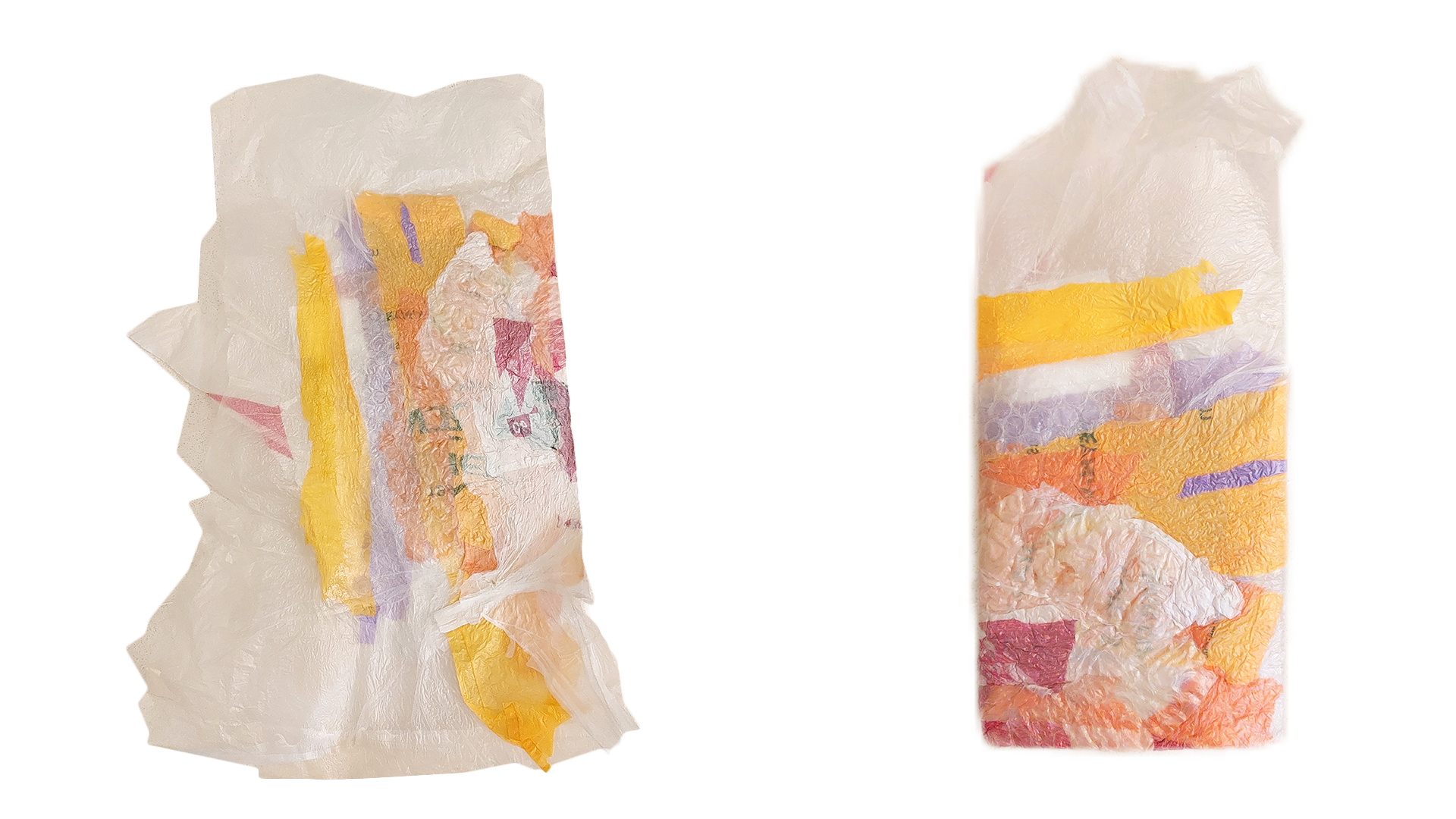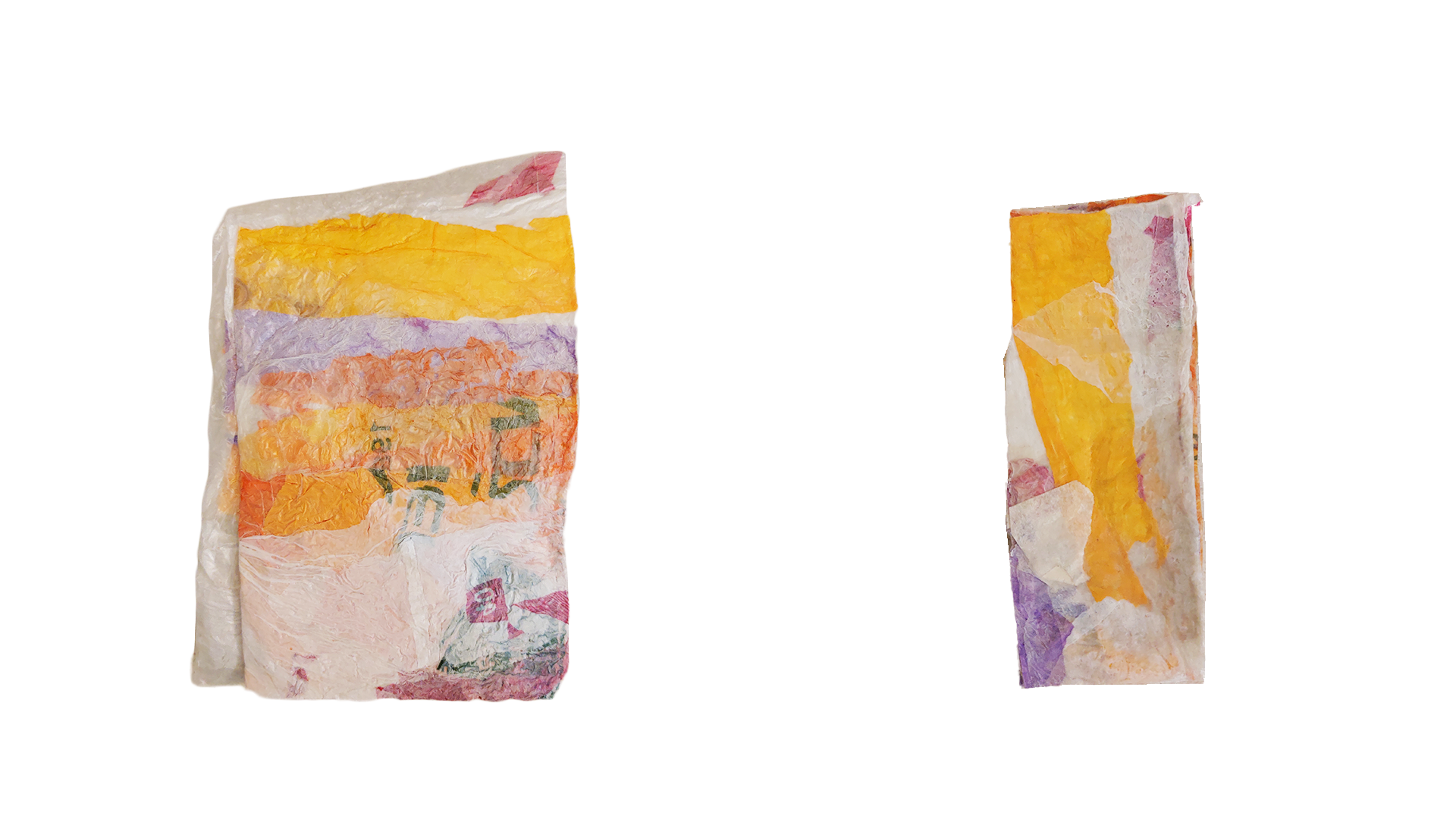- Week 2
- January 16'23

1. Show & Tell
Today we had a casual show & tell within our atelier.
The purpose of this show & tell is to share our projects with each other, as well as exchange some thoughts and opinions. Each of us presented what we've been doing over the holiday, answer some questions that come up and then go around to write feedbacks for each project.



Sadhna's chicken man!
I really liked that she combined her weight sensor prototype with touch designer to create a colorful and interesting outcome. The illustrations are also very appealing to look at and suits her style!
Something I would personally like to see next is how she could use the combination of her illustration and the weight sensor to tell a story about her research on chicken production in a way that is easily decipherable to the audience.
Ellie's metaverse space!
I was in awe when Ellie showed her project on screen, it looks incredible! Although I don't know much about her project in detail, from her explaination I know its about creating a space/lobby in the metaverse for people to browse through and shop for collectables and have them actually delivered to their home. A collectors haven!
I would personally love to see how the space could maybe be expanded further than just to facilitate online shopping but maybe as a social space as well for people with the same hobby to chat. Or maybe it would be cool if through that space, the customers could actually see the production process that goes behind making each unique design. But I'm not sure of her project goals; it seems like she's pretty much done with her graduation project!

Feedback Grid for my project and filled by my classmates
Takeaways from my presentation:
Comments from my classmates were quite insightful and helped me get a grip on how my project looked like from an audience point of view. I think because I immediately jumped into the material study and didn't spend enough time explaining the overall concept of the idea, it led to some confusion as voiced in the "can you elaborate more on" section.
During my presentation, I talked about my failed attempts in trying to incorporate the sensor on the structure and the difficulty I was facing to have it inflate. Here is where the "have you considered to" section came useful as it was filled with ideas and recommendations from my classmates as to how I could go around the issue or take a different direction. Some suggestion like using clips or wires to connect the electronics onto the artefact rather than have it embedded on it would help me solve the issue, and I also liked the suggestion on doing a comparative study of different plastic explorations since I have a lot of content for material studies. Overall, the encouraging comments from the other two sections were really nice to look through and gave me a motivation to progress in my work.
However after presenting the outcomes of my material explorations, there were several questions raised in regards to its relation to my project. I realized I didn't have a justifiable reason as to why I chose transparent PVC sheets to work with other than that it was used by inflatable projects I was inspired by. The material chosen also doesn't align with the values of the project on plastic waste because they were specifically purchased for this project rather than taking advantage of reusing or upcycling the material. In the end, a good suggestion was made for me to take a step back and re-think my direction for this project.
Next step: Step back and reconsider materials used.
2. Graduation Project — Material testing
Revisiting plastic fabric
After some rethinking and adhering to the comments from my show & tell, it made sense to revisit the idea of using found plastic as the base material for the artefact. Although the PVC sheets and creating inflatable structures was what I wanted to do, it didn't align with the principles of the project. So instead, I am going back to using found plastic bags to create plastic fabric as previously explored in semester 1 and further expand it from there.

Plastic fabric I made in sem 1

Possible patterns to explore for the fabric
From my exploration in sem 1, there were 2 things I wanted to explore further: the pattern and thickness of the fabric. So far, the plastics for the fabric were cut on the seams and had no specific order in terms of its layout. There are a lot of possible ways to make patterns on the fabric and I categorized them into 5 methods for future trials.
In this attempt, I cut the plastic bags into strips. A layer of transulcent plastic is placed as the bottom layer to act as a foundtion for the thin strips to fuse to. Next, this experiment also aims to investigate the quality of the fabric's strength and texture as it increases in thickness. The fabric was progressively folded unto itself, thus increasing its thickness and strength each time. A clothing iron is used as the main heat-source to fuse the plastic sheets together.


By the 4th fold, at approximately 16 layers of plastic, the fabric became too thick for the iron to fuse through. The sheet still retains some malleability and a fabric feel to the texture. From there, I cut the fabric into three separate strips, layered them, and pressed them on top of each other, resulting in a very rigid, cardboard-like quality and thickness of approximately 48 layers of plastic (left).
This exploration shows that it is possible to control the intended thickness and rigidness of the plastic fabric by layering them accordingly and fusing them together. The stripped plastic pattern also yielded an interesting visual result, although the graphics on the plastic becomes illegible at this point.
3. Weekly Roundup
Doubts
Plastic waste through discursive design, but what's the goal?
How are the artefacts connected to the insights? How are the artefacts specific to Indonesia?
Who are their target audience, and how is the artefact made to cater specifically to them?
Possible next steps
Take a step back. Collate insights from the interview with Sara. Pinpoint important things that might help you find a focus
Re-read dissertation and reasses your research objective
Look deeper into cultural habits specific to Indonesia to back up the design of the artefact (material, sound, texture, form/shape)
Make vision board of how you want your final project to look like in the end with all the intended outcomes in order to be able to take steps towards them.


